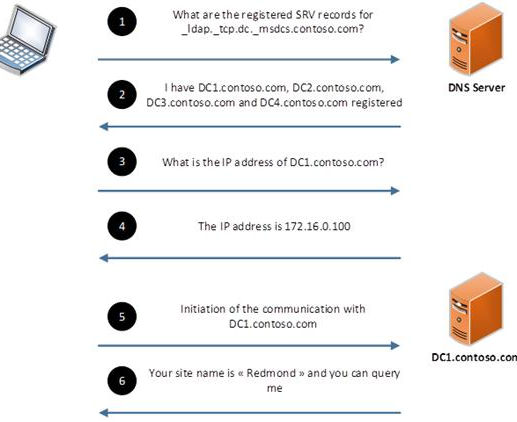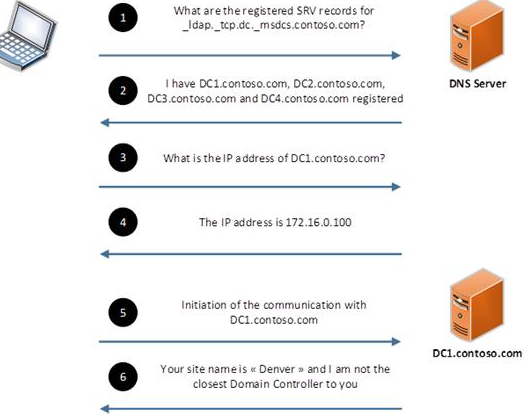Hi Aaron,
Thank you for posting in our forum
When the communication is initiated, the selected Domain Controller will check that the client computer belongs to its Active Directory site. This is done by comparing the IP address of the client computers with Active Directory configured sites and subnets. Here, there will be two possible scenarios:
• The Windows computer and the selected Domain Controller belong to the same Active Directory site: In this situation, the following will happen:
o The selected Domain Controller provides the client computer with the site name

• The Windows computer caches the name of its AD site and the name of the used Domain Controller. The selected Domain Controller will be used as long as it is available. The Windows computer no longer needs to re-do the localization process each time it needs to communicate with a Domain Controller.
• The Windows computer and the selected Domain Controller do not belong to the same Active Directory site: In this situation, the following will happen:
• The selected Domain Controller provides the client computer with the site name and informs it that it is not the closest Domain Controller

Remark 1: If the Windows computer fails to communicate with a selected Domain Controller, it will try to contact another one according to the priority and weight assigned to the SRV records.
Remark 2: If a Windows computer already has its AD site cached and would like to localize a new Domain Controller (Example: The current Domain Controller in use is no longer available) then it will start directly with Step number 7 (We refer to the steps shown in the previous figure)
Remark 3: The Windows computer AD site is stored in the following registry entry: HKLM\System\CurrentControlSet\Services\Netlogon\Parameters\DynamicSiteName

Hope this information can help you
Best wishes
Vicky